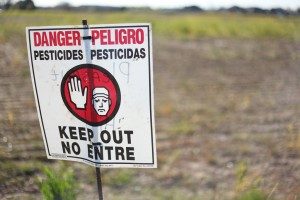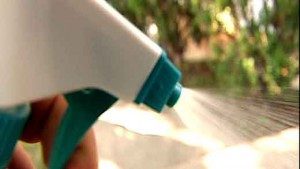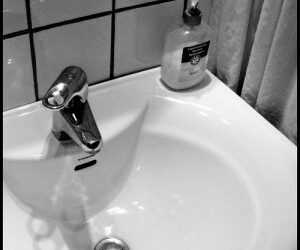Live Bee Removals
Bushkill Apiary specializes in live, chemical-free removal of all types of bees throughout the Catskill Mountains and surrounding areas of New York. We safely relocate honeybees, wasps, hornets, bumblebees, and yellow jackets without ever using poisons or pesticides. Unlike traditional extermination methods, our process ensures you won’t have to worry about lingering pesticide residues or their long-term effects on your home and health.
If you need bees removed, please review the information below and then Request a Quote.
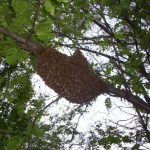 Swarms
Swarms
Feral bee colonies develop in two main stages. The first stage is the swarm phase, when roughly half of the bees from an established hive—led by the queen—depart to start a new colony. The bees that remain will raise a new queen and continue their existing colony. Swarming is nature’s way for honeybees to reproduce and expand their populations.
A swarm is only a temporary gathering, usually appearing as a cluster about the size of a football, often found hanging from tree branches or fences. This resting spot is just a stopover while scout bees search for a suitable new home. Within a day or two, the swarm will move on. Swarms located 20 feet or less from the ground are the easiest to remove: we can use a bee vacuum to gently collect the bees into a screened box for relocation. For swarms higher than 20 feet, we set out a lure hive nearby, hoping the bees will choose it as their new home rather than settle in inconvenient places—like your walls or attic.
The second stage is colony establishment. Once the swarm finds a suitable location, the bees begin to build comb, rear new brood, and store nectar—the foundations of their new hive. Honeybees prefer tight, enclosed spaces with small entrances, frequently choosing old trees but sometimes ending up inside the walls or attic of a home.
When bees establish themselves within a structure, we use one of two specialized removal techniques, depending on the situation: a trap out or a cut out. Each method is designed to remove the bees safely and effectively.
Trap-Out Method
Trapping, also known as a “trap out,” is the preferred bee removal method when it isn’t possible or practical to open up a structure—such as with brick or stone walls. In this process, we place a cone-shaped, one-way trap over the main bee entrance and seal up any secondary openings. The design of the trap allows bees to exit freely, but prevents them from re-entering the structure.
As the foraging bees leave to collect nectar and pollen, they find themselves unable to return, cutting off the food supply to the colony. Over time, the colony inside begins to weaken as fewer and fewer bees remain.
Nearby, we position a trap hive, baited with a queen bee. The returning foragers, unable to rejoin their original hive, naturally gravitate to the new trap hive. Within a few days, the displaced bees accept the new queen, and a new colony begins to establish itself in the trap hive.
After several weeks, the new trap hive is thriving and the original colony has been depleted. At this point, the one-way cone is removed, allowing bees from the trap hive to enter the old nest and collect any remaining nectar and honey. Once all the resources have been removed, we can then seal up the entrance for good.
Benefits and Drawbacks
The main benefit of trap-outs is that they cause very little damage to your property—at most, some minor staples, caulking, or screws are used to secure the funnel and block entrances. Additionally, this method removes excess honey and nectar from within the structure. The primary drawback is the time involved: a complete trap-out may take up to 12 weeks, and the wax comb will remain inside the wall or cavity.
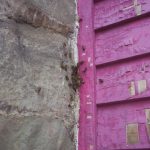
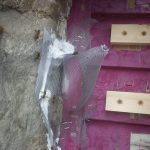

Cut-Out Method
The cut-out method involves the physical removal of bees and all nest material (comb, brood, honey, etc.) from within a structure. Although this technique is the most labor-intensive, it also achieves the most thorough results.
The greatest challenge is pinpointing the exact location of the core bee nest. Sometimes the entrance is visible on a home’s exterior wall, but the main cluster can be hidden 10 feet or more inside, such as between the lower story ceiling and the upper story floor. Locating the main colony sometimes requires opening multiple areas before the actual nest is exposed.
Once the nest is found, we enlarge the opening in the wall or ceiling to fully access the bees and comb. Using a bee vacuum, we gently collect the bees into a screened box for safe relocation. Sections of wax comb are carefully cut out, mounted into wooden frames, and later returned to the bees in their new hive. Depending on the amount of stored nectar or honey, this process can be very sticky!
After the cavity is thoroughly cleaned, the exterior entrance is sealed to prevent future swarms from moving into the same site.
Benefits and Drawbacks
The main benefit of the cut-out method is that it removes all remnants of the colony—including honey, brood, comb, and bees—usually in less than four hours. This greatly reduces the risk of future damage, odors, and pest infestations.
However, this method also requires the most repair work to the structure afterward. Still, it is vital not only to remove the bees, but also as much nest material as possible. Leaving wax, brood, honey, or dead bees behind will eventually lead to staining, odors, and attract pests such as mice, beetles, moths, and roaches. Honey’s hygroscopic properties (it absorbs moisture from the air) can cause it to ferment, soak into walls, and create stains that are nearly impossible to paint over—often necessitating drywall replacement.
This is why sealing bees in a wall is never recommended: they may find a new way into your home, or perish and leave behind a far more difficult cleanup. Likewise, poisoning bees leaves behind decaying material that creates ongoing problems.


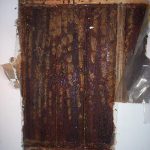
Can’t I just get rid of the bees myself?
You can try, but success is far from guaranteed. Bee colonies often nest 10 feet or more from the entrance point, making it nearly impossible to reach them with store-bought poisons. In many cases, paying a professional exterminator ends up being more costly than having the bees safely removed. Even professionals cannot offer 100% effectiveness—many actually refer these cases to beekeepers who specialize in live removals.
If you do succeed in killing the bees, that’s often just the beginning of your problems. You’ll have exposed yourself, your family, and your pets to toxic chemicals, and will be left with walls or ceilings full of dead bees, larvae, pollen, wax, and honey. Honey is highly hygroscopic, meaning it will absorb moisture from the air, which can cause it to ferment and seep through drywall. Damaged drywall won’t hold paint and will likely need to be replaced. The smell and decaying materials will also attract pests such as ants, mice, moths, and beetles. Once poison has been used, most beekeepers will not handle the hive’s removal. Please keep this in mind—there’s no turning back after using chemicals.
What happens to the bees after removal?
Honeybees are moved into a traditional hive and relocated to an isolated out-apiary where they are carefully monitored. Once they are healthy, disease-free, and established in their new home, the bees are introduced to a communal apiary. Often, additional feeding and care are required to help the colony recover from the stress of removal.
Other types of bees are handled humanely and safely, without the use of poison or pesticides. In fact, we’re currently partnering with laboratories that use bee venom to help patients with sting allergies, making sure any removal has a beneficial impact.
Are my honeybees valuable?
Yes and no. The colony’s true value lies in its queen; without her, the hive cannot survive for long. Successfully capturing the queen during a removal is only about a 50/50 chance. With trapping, a new queen pheromone lure must be purchased because the original queen usually does not survive. There’s always a risk the colony is diseased, further lowering its value. The time and effort involved in removal or trapping is rarely justified by the bees’ worth—except in the case of easily accessible swarms, where the process is simpler.
Can I keep the honey or wax after a cut-out?
Of course! We’re happy to leave you a section of comb honey to enjoy. The remaining comb and honey, however, are essential for the bees’ recovery and will be placed back into their new hive. The honey and comb are used as food and building material as the colony re-establishes itself.
I’d love to keep my bees—can I become a hobbyist beekeeper?
Absolutely! We encourage anyone interested in beekeeping to get started. We also run a local beegroup to mentor and assist new backyard beekeepers kick off their beekeeping journey. It is totally FREE to be part of the beegroup. Visit HVHives.com to learn more and sign up for our monthly newsletter.
Do you use poisons or pesticides during bee removals?
No—we never use poisons or pesticides. All of our bee removal methods are designed to keep the bees alive and your home safe. We believe in environmentally friendly practices and wouldn’t expose your family—or ours—to unnecessary toxins. After the removal, we’ll provide you with safe, effective advice on how to handle any lingering bees.
Don’t Cut Corners with DIY Spraying or Inexperienced Removers
Attempting to eliminate bees yourself, or hiring someone who isn’t experienced with proper bee removal, can cost you much more in the long run—both in money and property damage. What might seem like a quick fix often leads to significant repairs, persistent bee problems, and potential health risks.
See firsthand what can go wrong by watching this video from my good friend JP at the Beemaster’s Beekeeping Forum, which demonstrates the worst-case scenario when attempting to kill bees on your own:
Compilation of articles related to pesticide use and health risks -> Pesticide News
Toxic pesticide levels found in tampons 40 times higher than legal limit for water
Glyphosate, a pesticide linked to cancer, found at very high levels in menstrual products in the UK, according to report Toxic pesticide levels have been found in tampons at levels 40 times higher...
Pesticide Residues in Pet Food Threaten Health of Companion Animals
Published in Environmental Pollution, a study of commercial dry pet products finds dietary pesticide residues in dog and cat food, “highlighting the urgent need for improved regulatory frameworks to...
Controversial New Study Links Parkinson’s With Living Near a Golf Course
A contentious new study has found that people who live near golf courses may face a higher risk of Parkinson's disease. That does not mean that golf courses are directly causing Parkinson's, but the...
Four minors dead in northeast Amarillo after pest control chemical in home creates lethal gas
Four minors are confirmed dead in what Amarillo fire officials are describing as an accidental poisoning at a northeast Amarillo home. Amarillo Fire Department Captain Larry Davis said that there...
Report: Pesticide Exposure in Pregnancy May Raise Autism Risk
Pregnant women who live within a mile of spaces where commercial pesticides are applied appear to have an increased risk of having a child with autism, a new study suggests. The risk that a child...
Alert issued on two commonly used crop pesticides which may damage the brains of children and unborn babies
A safety watchdog has issued an alert about two food crop pesticides, which may damage the brains of babies in the womb and children. The suspect chemicals are used around the world on farms growing...
Insecticides Could be to Blame for Behavioral Problems in Children
Millions of children in the U.S. are being exposed to insecticides that are currently used daily in homes around the country. According to a recent study published by Canadian researchers, the...
Family Settles with Exterminator whose Poisons Killed their Children
Nathan and Brenda Toone suffered the unthinkable loss of two of their daughters to alleged pesticide poisoning within days after taking care of the seemingly routine home maintenance task of using...
Toxins Meant to Kill Pests Can Put Human Health in Danger
Pesticides and household chemicals seep into our skin and filter through our lungs every day. The exposure to toxins meant to kill pests puts human health in danger and those toxins have long been...
Why Am I Fat? Four Surprising Reasons
These factors might mean the difference between those who eat without gaining weight ... and the rest of us. Whatever fad diet books tell you, the single most important factor affecting weight gain...
Study: Home Pesticides Linked to Childhood Cancer
As if links to Parkinson's disease, diabetes and obesity, cancer, low sperm counts and other reproductive health problems, and childhood developmental problems and diseases were not enough ... or...
Lower IQ in Children Linked to Toxic Air Pollutants, Some Pesticides
A mother’s exposure to urban air pollutants known as polycyclic aromatic hydrocarbons (PAHs) can adversely affect a child’s intelligence quotient or IQ, according to the new study “Prenatal Airborne...
Study: Children Susceptible to Pesticides’ Health Effects Until Age 7
It's well known that children are more susceptible to the harmful effects of chemical exposure than adults. For one, their bodies are still developing rapidly, so chemicals can interfere with the...
Pesticide Exposure Linked to Parkinson’s Disease
Study: Two common pesticides, when mixed, amp up risk for Parkinson's disease. The risk of Parkinson's disease increases in people who live near farm fields sprayed with a combination of pesticides....
Working with pesticides impacts women’s fertility
Women with potential exposure to pesticides at work or at home took longer to get pregnant than women without pesticide connections. Pregnant women living in a migrant, farmworker community in...
Warning: this pesticide may be toxic to children and fish
Triclosan rubber-stamped by EPA : environmental safety down the drain This fall, EPA approved re-registration of antibacterial soap ingredient triclosan for yet another five years of use in consumer...
Pesticide mixes: when 1 + 1 does not equal 2
A mix of two pesticides had greater toxic effects on exposed salmon than would be expected from one separately, adding to concerns that health risks from pesticides are underestimated. Risk...
Toxic contamination starts at home
When women from 120 middle-class homes learned their bodies contained low levels of toxic chemicals, most of them blamed chemical spills, waste dumping or secret military experiments. They were...







